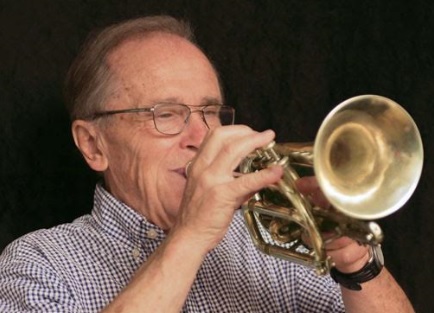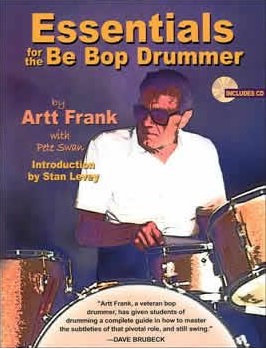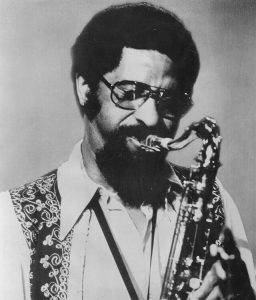Afro-Cuban culture, Blog, Cuba, Video and audio
Bobby Sanabria tells the story of the bongo.
This archetypal Cuban instrument was developed in Oriente, eastern Cuba.
Understanding a little about it will explode your appreciation of Cuban music exponentially.
Want more?
Of course, you do!
– Ken McCarthy
Jazz on the Tube
P.S. Our unique programming is made possible by help from people like you. Learn how you can contribute to our efforts here: Support Jazz on the Tube
Thanks.
Go to Cuba with Jazz on the Tube as your guide:
Click here for details
Afro-Cuban culture, Blog, Cuba, Video and audio
Last week we dropped in on a Changüí party in Oriente (eastern Cuba.)
We witnessed a friendly and sincere dispute between a young rapper from Havana and a Changüisero.
Today we go back to the music and learn how Changüí lyrics are improvised and why there’s more to it than meets the eye.
– Ken McCarthy
Jazz on the Tube
P.S. Our unique programming is made possible by help from people like you. Learn how you can contribute to our efforts here: Support Jazz on the Tube
Thanks.
Go to Cuba with Jazz on the Tube as your guide:
Click here for details
Afro-Cuban culture, Blog, Cuba, Video and audio
A scene from the movie “Cuba Feliz”
If you don’t speak Spanish and the subtitles aren’t working and you’d like to see what they are singing, you can click on the upper left hand corner of the video and be taken to YouTube to see a subtitled version. (But remember to come back!)
Seventy-six-year-old Cuban street musician Miguel Del Morales, known as El Gallo (The Rooster), travels around Cuba with his guitar, making music in the homes of friends, in bars, and on street corners, in courtyards and stairwells. His rich voice, colored by a lifetime of cigarettes and rum, weathered by the sun and rain, bespeaks the joys and sufferings of his countrymen. An urban troubadour, Del Morales has been called “a living memory of Cuban bolero.”
At one point, he visits a Changüí party.
Here’s some info from wikipedia about Changüí:
Changüí is a style of Cuban music which originated in the early 19th century in the eastern region of Guantánamo Province, specifically Baracoa. It arose in the sugar cane refineries and in the rural communities populated by slaves. Changüí combines the structure and elements of Spain’s canción and the Spanish guitar with African rhythms and percussion instruments of Bantu origin. Changüí is considered a predecessor of son montuno (the ancestor of modern salsa), which has enjoyed tremendous popularity in Cuba throughout the 20th century.
Changüí is related to the other regional genres of nengón and kiribá and is descended from nengón. Technically, the changüi ensemble consists of: marímbula, bongos, tres, güiro (or guayo) and one or more singers.[ Changüi does not use the Cuban key pattern (or guide pattern) known as clave.The tres typically plays offbeat guajeos (ostinatos), while the guayo plays on the beat.
– Ken McCarthy
Jazz on the Tube
P.S. Our unique programming is made possible by help from people like you. Learn how you can contribute to our efforts here: Support Jazz on the Tube
Thanks.
Go to Cuba with Jazz on the Tube as your guide:
Click here for details
Artist-Educators, Blog, Jazz on the Tube Interview

Interview
Download the mp3
Musician, bandleader, music director, club owner, and educator, Ed Polcer has played with the greats, hosted the greats at his club Eddie Condon’s in New York City, programmed great jazz parties around the country, and now in addition to playing is enjoying introducing the next generation to the beautiful art of jazz.
More information go to the Ed Polcer website
– Ken McCarthy
Jazz on the Tube
P.S. Our unique programming is made possible by help from people like you. Learn how you can contribute to our efforts here: Support Jazz on the Tube
Thanks.
Artist-Educators, Blog, Jazz on the Tube Interview

Interview
Download the mp3
Paul Steinbeck, a musician and educator, (Assistant Professor of Music Theory at Washington University in St. Louis), covers one of the most intriguing bands in the history of American music.
Founded in Chicago in the “tumultuous” 60s, The Art Ensemble of Chicago carved out a space for itself in the notoriously conservative music industry that not only allowed its members full creative freedom, but also paved the way for countless other creative musicians and artists.
How did this group which accepted no limitations or labels survive and thrive in a world that demands musicians put themselves in a box?
The answer is in the pages of this book.
Roscoe Mitchell, one of the members of the group, had this to say about it:
“This book is more than we could have hoped for, telling the complete history of the Art Ensemble of Chicago in careful, engaging detail.”
For more information about the book:
www.press.uchicago.edu/ucp/books/book/chicago/M/bo25125876.html
More information about Paul:
www.paulsteinbeck.com
How to support the book:
1. Get it
2. Review it
3. Let your college’s librarian know about it
– Ken McCarthy
Jazz on the Tube
P.S. Our unique programming is made possible by help from people like you. Learn how you can contribute to our efforts here: Support Jazz on the Tube
Thanks.
Artist-Educators, Blog, Jazz on the Tube Interview
Interview
Download the mp3 here
About Artt Frank:
Drummer Artt Frank was born on March 9, 1933 in Westbrook, Maine.
Frank has been a professional drummer since he was a teenager.
His most significant musical association was with Chet Baker who he met when the trumpeter was struggling in the mid-1960s, playing with him off and on for 20 years.
Frank has also performed with Billie Holiday, Sonny Stitt, Jimmy Heath, Ted Curson and Al Cohn among others and has led several albums of his own.
His book Chet Baker: The Missing Years, A Memoir was published in 2014.
Artt Frank talks about his friend Chet Baker in this interesting interview.
-Scott Yanow
“My whole philosophy of music is to build a spiritual unity in sound. If an audience becomes a part of that unity, if only for a few minutes, then I have accomplished what I have set out to do.
This is my way of sharing with others all the wonderful gifts that GOD has bestowed upon me. In my compositions, this unity is expressed through lyricism.
A melody that can be understood, felt and shared is a very powerful thing as is the sharing that we show in love for one another – a spiritual unity coming down from, and ascending up to the FATHER of LIGHTS who gives it continuously when you ask.”
– Artt Frank
Chet Baker – Tune Up
Chet Baker, trumpet
Drew Salperto, piano
Mike Formanek, bass
Artt Frank, drums
The Artt Frank Group – Tribute to Chet Baker
Artt Frank, drums
Dave Liebman, soprano sax
Billy Dowling, trumpet
Phil Markowitz, piano
Dennis Irwin, bass
Artt Frank demonstrates melodic Bebop Drumming

Earla Porch – Easy Street
Earla Porch, vocals
Joe McWilliams, piano
Ken Berry, tenor sax
John Mobillo, bass
Kathy Frank, drums
– Ken McCarthy
Jazz on the Tube
P.S. Our unique programming is made possible by help from people like you. Learn how you can contribute to our efforts here: Support Jazz on the Tube
Thanks.





